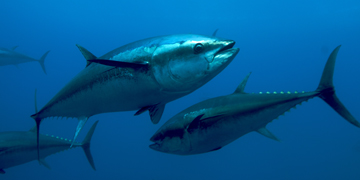271112 nuclear fish.JPG

Months after a nuclear incident in Japan, fish with high concentrations of radioactive particles were showing up in the waters off the coast of California. Credit: OCEANA / Keith Ellebogen
Humans aren’t the only creatures that move around the globe in a hurry. Many species of fish do, too. One indication of just how quickly they move came after the nuclear accident in Japan. Within months, fish with high concentrations of radioactive particles were showing up in the waters off the coast of California.
A massive earthquake and tsunami damaged the Fukushima Dai-ichi nuclear reactors on March 11, 2011. The tsunami swept over the reactors, washing radioactive elements into the western Pacific Ocean. Fish, turtles, seabirds, and other animals ingested some of those elements.
Many of those creatures migrate to other waters — sometimes across great distances.
In August of 2011, for example, researchers tested 15 young bluefin tuna caught near San Diego. The tuna were about two years old — just the right age to have recently migrated from Japanese waters. The researchers found that the levels of the radioactive element cesium were about 10 times higher in these tuna than in older fish, which had been living in American waters.
The researchers noted that the tuna presented no danger to consumers because the level of cesium was lower than the levels of naturally occurring radioactive elements also found in the fish. And over time, the cesium concentrations would decline as the fish grow and excrete some of the cesium, and as the radioactivity decays.
But the radioactivity can help researchers track the long migrations of fish and other creatures as they travel around the globe.

